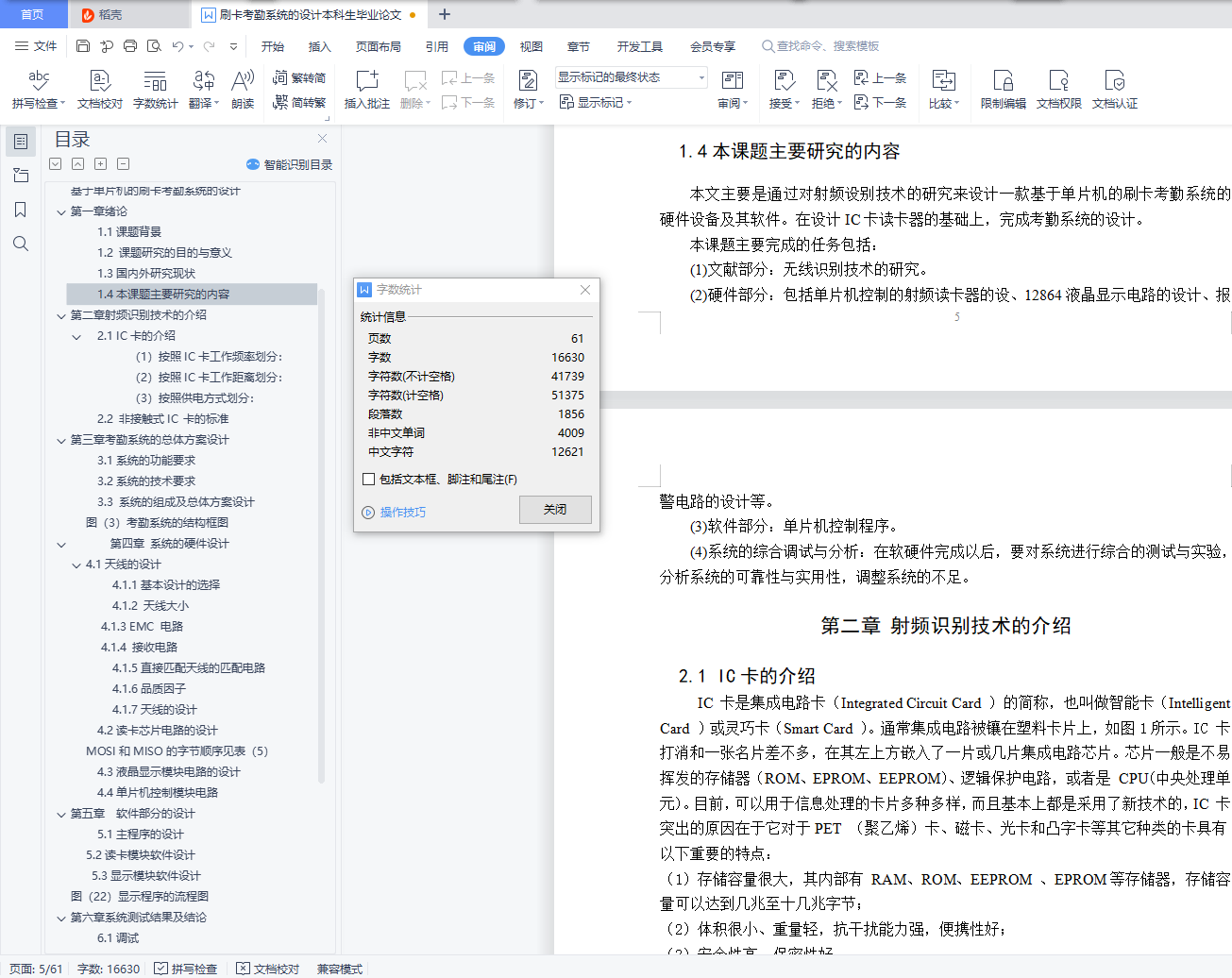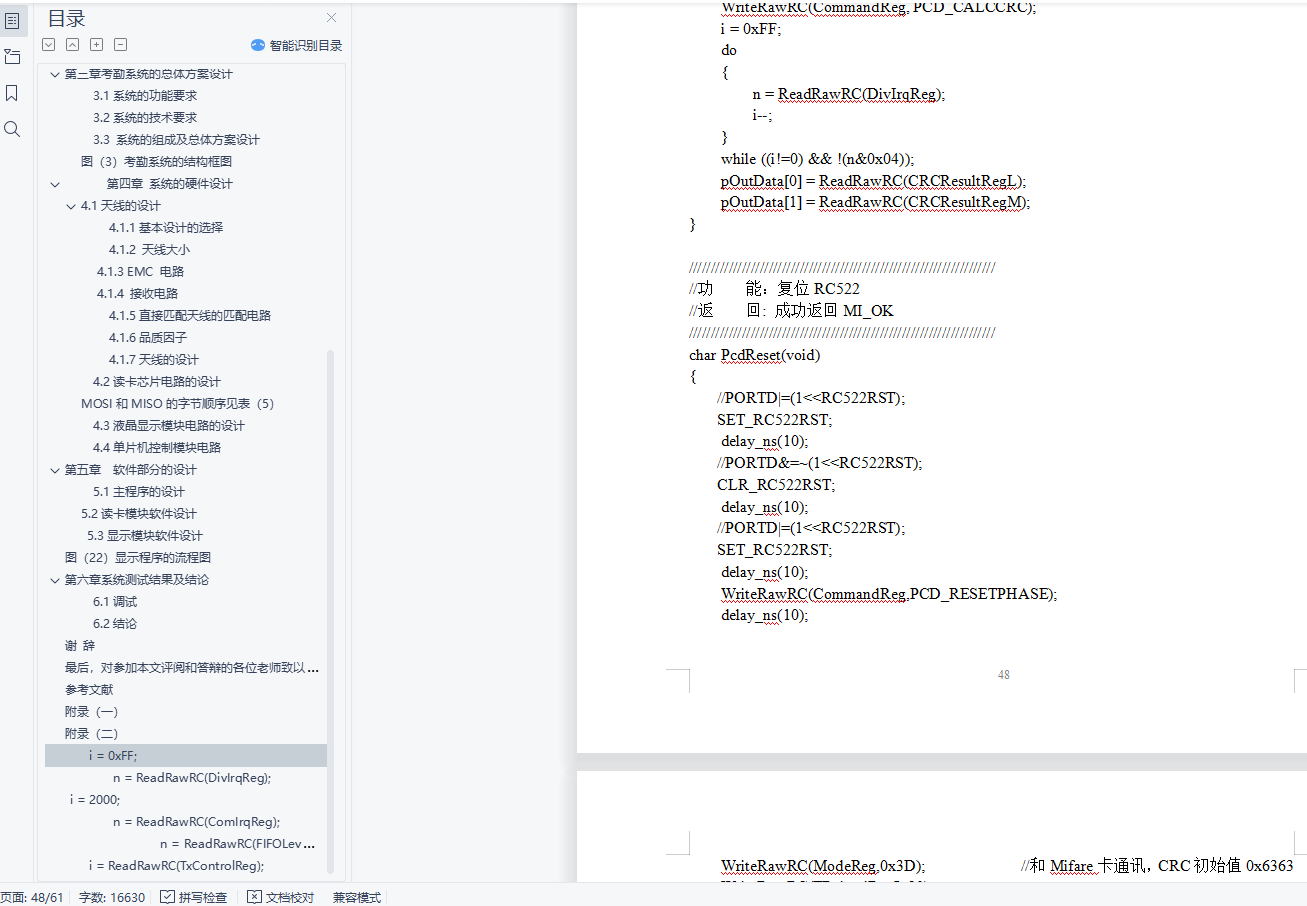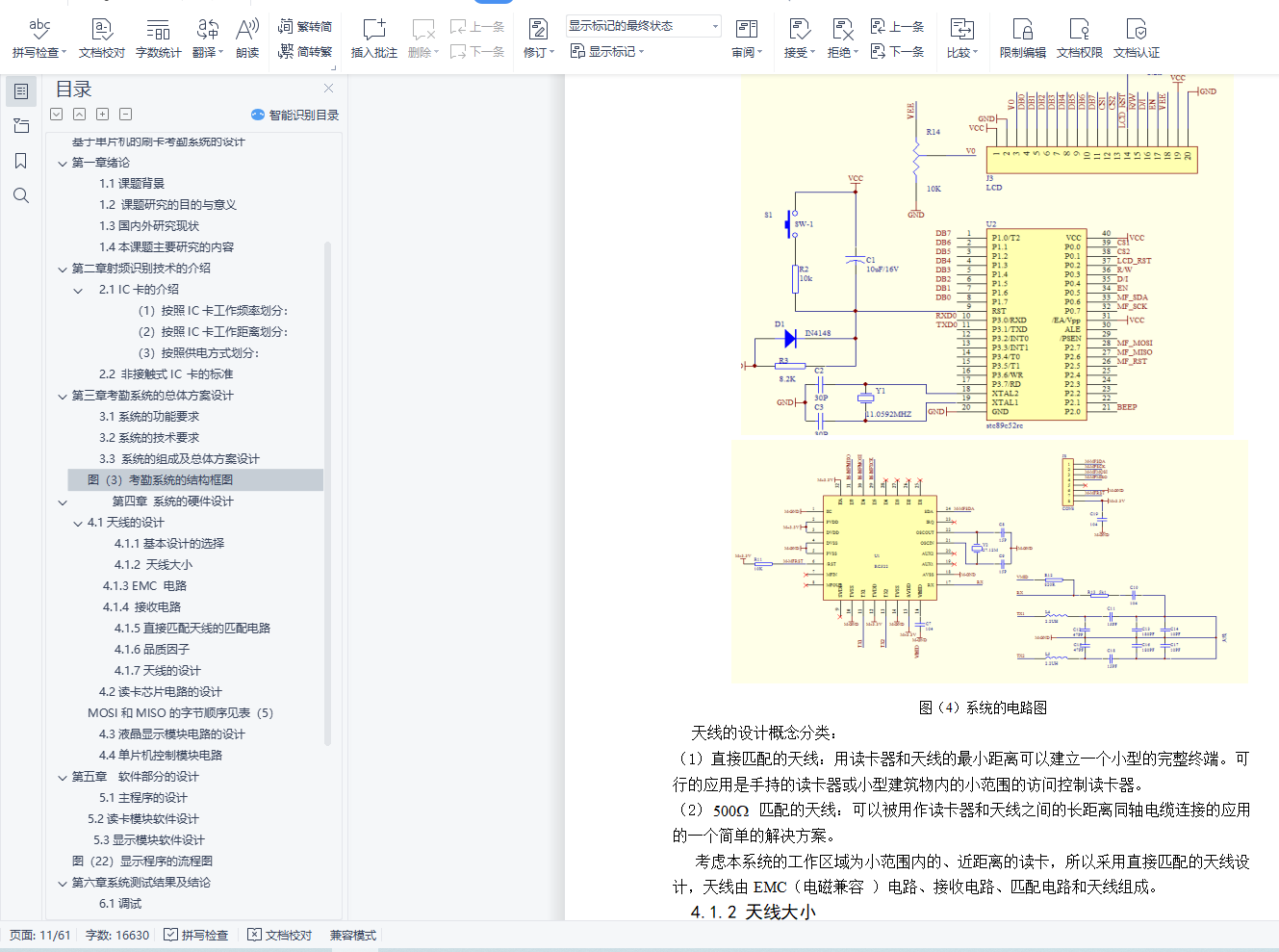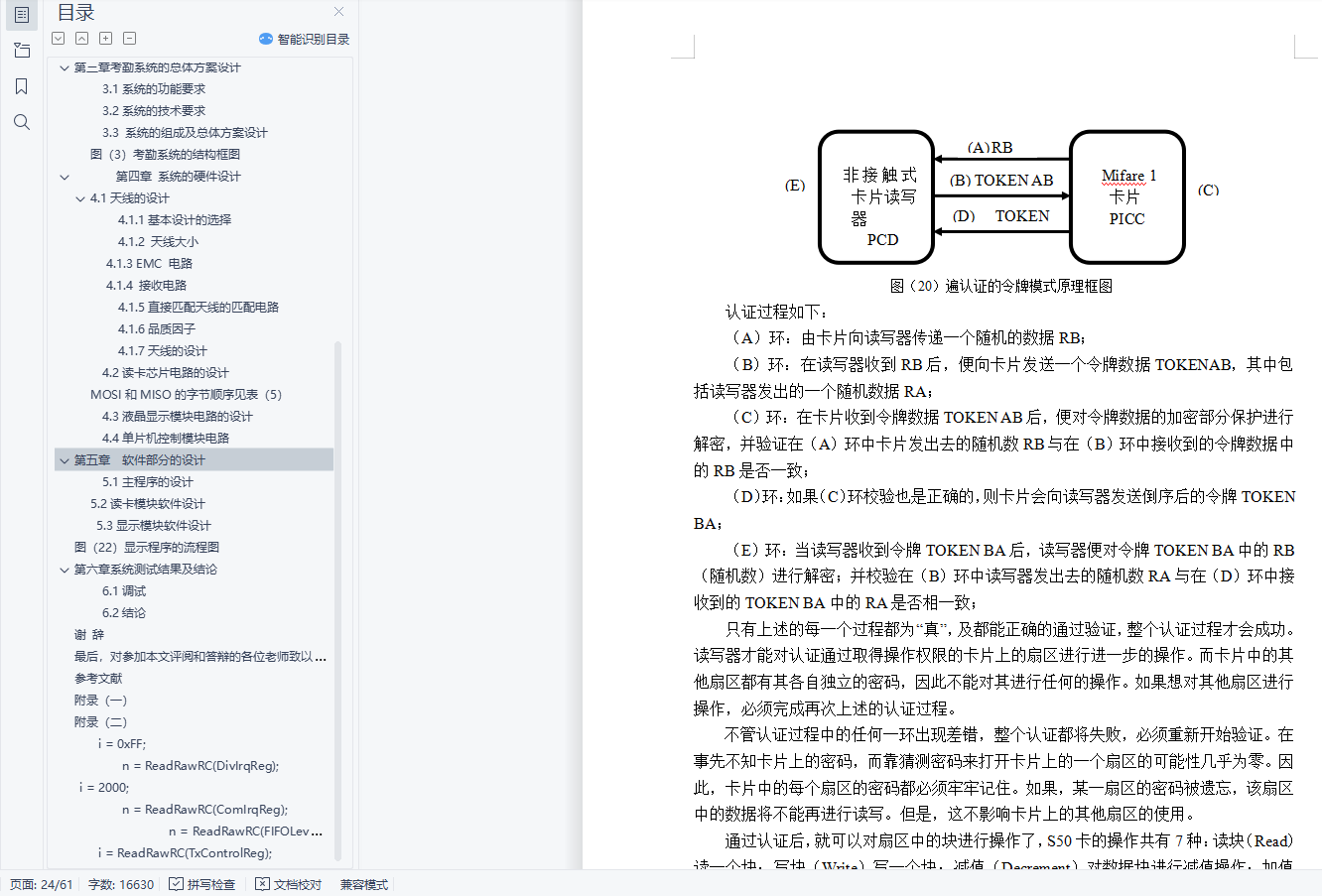摘要
射频识别(Radio Frequency Identification,以下简称RFID)技术是智能刷卡系统的关键。本文通过研究射频卡系统及相关理论,应用射频识别技术、MCU及接口技术、SPI通信等技术,设计一款刷卡考勤系统。
本课题研究的刷卡考勤系统的主控制器采用STC89C52RC,读写芯片采用的是Philips公司的MFRC522,通过单片机控制读卡模块读取集成电路卡(Integrated Circuit Card ,简称IC卡)的卡号,跟数据库中数据进行比对,把考勤信息通过128*64点阵的中文液晶显示模块显示。
本设计将射频识别技术与日常考勤等结合起来,具有很大的应用前景和一定的经济价值,对RFID的推广有积极的作用。
关键字:RFID IC卡 RC522 单片机
Abstract
Radio frequency identification (Radio Frequency Identification, hereinafter referred to as RFID) technology is the key of the smart card system.In this paper, it is based on RF card system and related theories, with the application of radio frequency identification technology, MCU and interface technology, and SPI communication technology, to design a card system.
The main controller of this research about Card system project is STC89C52RC and the reader chip is the MFRC522 of the Philips company.Controlled by the micro-controller ,IC card reader module reads (Integrated Circuit Card, referred to as ,IC card) card number ,which is in comparison with the database data . Then ,the attendance information is shown by 128 * 64 dot matrix Chinese liquid crystal display module.
With the integration of radio frequency identification technology and daily attendance , the design not only has great application prospects and some economic value, but also has a positive effect on the promotion of RFID.
Keywords: RFID , IC card , MFRC522 , STC89C52RC
目录
摘要…………………………………………………………………………1
Abstract……………………………………………………………………2
第一章 绪论………………………………………………………………4
1.1课题背景…………………………………………………………4
1.2课题研究的目的与意义…………………………………………4
1.3国内外研究现状…………………………………………………5
1.4本课题主要研究的内容…………………………………………5
第二章 射频识别技术的介绍………………………………………………6
2.1 IC卡的介绍 ……………………………………………………6
2.2 非接触式IC 卡的标准…………………………………………8
第三章 考勤系统的总体方案设计…………………………………………9
3.1系统的功能要求…………………………………………………9
3.2系统的技术要求…………………………………………………9
3.3 系统的组成及总体方案设计……………………………………10
第四章 系统的硬件设计……………………………………………………10
4.1 天线的设计………………………………………………………10
4.2 读卡芯片电路的设计……………………………………………15
4.3 液晶显示模块电路的设计………………………………………18
4.4 单片机控制模块电路……………………………………………20
4.5 其他模块电路的设计 …………………………………………21
第五章 软件部分的设计 …………………………………………………22
5.1 主程序的设计……………………………………………………22
5.2 读卡模块软件设计………………………………………………23
5.3 显示模块软件设计………………………………………………25
第六章 系统测试结果及结论………………………………………………26
6.1 调试………………………………………………………………26
6.2 结论………………………………………………………………26
谢辞 …………………………………………………………………………27
参考文献 ……………………………………………………………………27
附录(一)……………………………………………………………………27
附录(二)……………………………………………………………………29








